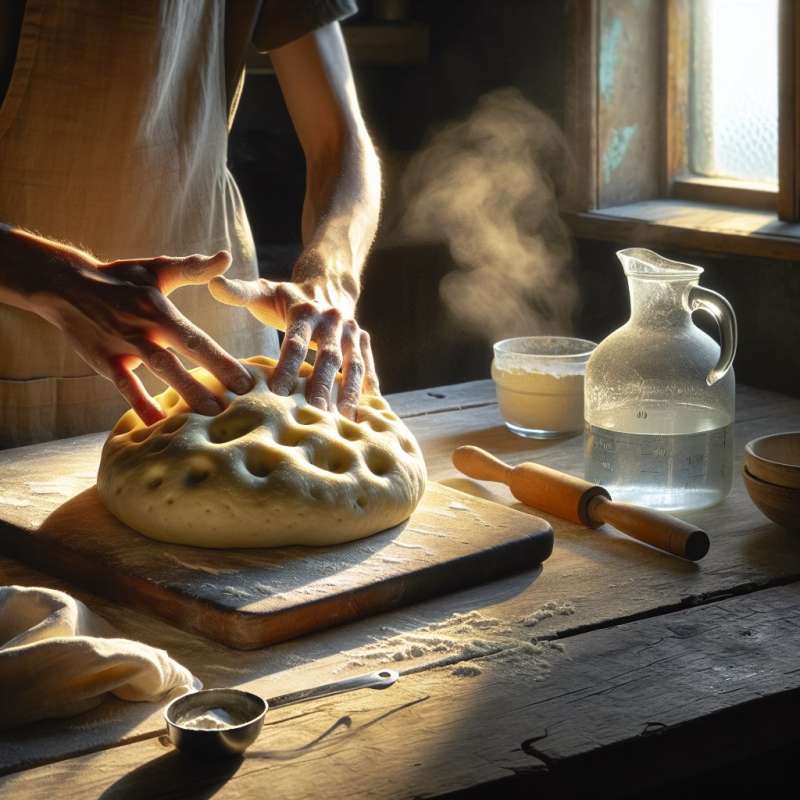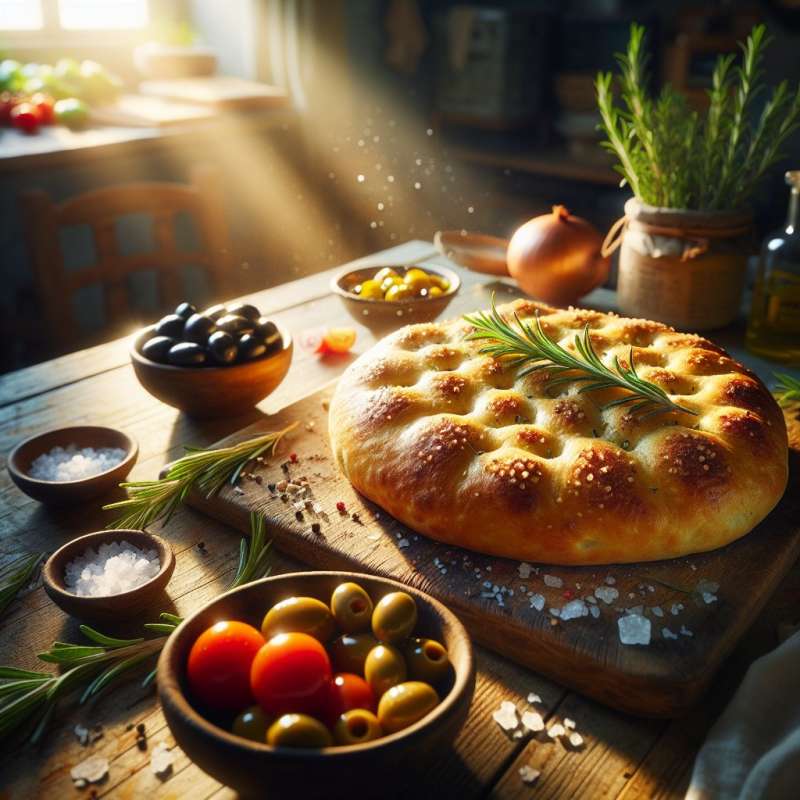
Focaccia: A Historical Bread
Originating from ancient Rome, 'panis focacius' was traditionally baked in the ashes of a hearth. This flatbread has since evolved into the beloved focaccia, renowned in Italian cuisine and enjoyed globally.
Choosing the Right Flour
For authentic focaccia, use Italian '00' flour, famed for its fine texture and high gluten content, which creates the perfect chewy texture. Alternatively, all-purpose flour can suffice in a pinch.
Hydration Matters
Focaccia dough is unique for its high hydration, around 75% water by flour weight. This moisture is crucial for creating its characteristic airy crumb and crisp exterior.
Salt and Olive Oil
Sea salt and high-quality olive oil are focaccia's soul. Generously oiling the dough surface before baking creates the signature golden crust, while coarse salt provides a flavor contrast.
The Art of Dimpling
Dimpling is not just decorative. Pressing your fingers into the dough creates pockets to trap olive oil and herbs, which infuse flavor and contribute to the focaccia's moist interior.
Herbs and Toppings
Classic focaccia is embellished with rosemary and salt, but variations abound. From cherry tomatoes and olives to caramelized onions, the choice of topping can transform the flavor profile.
Resting and Fermentation
Patience is key. A long, slow fermentation allows flavors to develop and the gluten network to strengthen, giving rise to a focaccia with complex taste and perfect texture.Focaccia in Space
In 2015, Italian astronaut Samantha Cristoforetti baked focaccia aboard the International Space Station using special space-friendly ingredients.
What was 'panis focacius' baked in?
Wood-fired oven
Hearth ashes
Modern bakery
Company